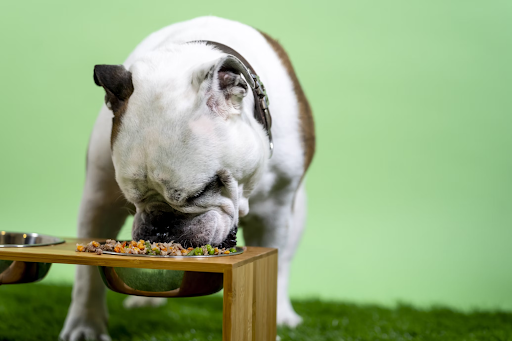Are you looking for a way to provide your dog with more natural, wholesome nutrition? Raw feeding is a great nutritional option for dogs that can help them live longer and healthier lives. While the concept of raw feeding may sound complicated at first, it doesn’t have to be—especially if you use these essential tips. From learning how much food your pup needs to understand which ingredients work best in their diet, this comprehensive guide will equip you with all the knowledge necessary for successful raw feeding!
Balancing Nutrients
Balancing the nutrients in your dog’s raw diet is crucial for their overall health and well-being. Unlike processed commercial dog foods, raw feeding allows you to control exactly what goes into your pup’s meals. However, this also requires a careful calculation of the nutrients your dog needs. A well-balanced selection of 80/10/10 raw dog food includes 80% muscle meat, 10% bone, and 10% organ meats. By following this ratio, your dog will receive the necessary macronutrients such as protein, fat, and carbohydrates, as well as micronutrients like vitamins and minerals.
Choosing High-Quality and Safe Raw Ingredients
Choosing quality raw ingredients is of utmost importance when feeding your dog a raw diet. Always ensure that the meat and produce you use are fresh and as organic as possible to avoid exposure to harmful chemicals and pathogens. Lean meats such as chicken, turkey, and beef are excellent sources of protein. When it comes to organ meat, options like liver, heart, and kidney are nutrient-dense choices. For bone content, uncooked chicken or turkey necks and wings are safe options.
Remember, bones should always be served raw, as cooked bones can splinter and pose a choking risk or other injuries. Including a variety of vegetables and fruits can provide essential fibers, vitamins, and minerals. However, be aware of certain vegetables and fruits that may be toxic to dogs, such as onions, grapes, and raisins. Always research before introducing a new food item to your dog’s diet. By carefully selecting and preparing these ingredients, you can provide your dog with a balanced diet that is both nutritious and safe.
Incorporating Organ Meats for Essential Nutrients
Organ meats are a crucial component in a dog’s raw diet, providing a wealth of essential nutrients. They are dense in vitamins and minerals that are rarely found in muscle meat alone. The liver, for instance, is rich in vitamin A, iron, and copper while the heart, which is essentially a muscle, is packed with taurine and zinc. Kidneys, on the other hand, offer a good amount of vitamin C and B vitamins.
Sourcing organ meats can be done through local butchers, farmers’ markets, or reputable online pet stores. Remember, variety is the key. Rotate between different organ meats to ensure a balanced intake of nutrients. Typically, these meats should make up about 10% of the overall meal.
However, it’s crucial to introduce organ meats gradually into your dog’s diet to avoid gastrointestinal upset. Starting with small amounts and gradually increasing the serving size over time can help your dog adjust to the rich nutrient content of these foods. Always monitor your dog’s reaction when introducing new foods and consult with a veterinarian if you notice any adverse reactions.
 Adding Fruits and Vegetables for Dietary Variety
Adding Fruits and Vegetables for Dietary Variety
Incorporating a variety of fruits and vegetables into your dog’s raw diet can significantly enhance its nutritional profile. Not only do they provide essential dietary fiber to support digestive health, but they also offer an array of vitamins, minerals, and antioxidants that contribute to overall health and well-being.
Fruits like blueberries, apples (without seeds), and bananas are excellent choices, packed with beneficial nutrients and antioxidants. They can be mashed or pureed for easier digestion. Vegetables such as broccoli, spinach, and carrots can be lightly steamed and then chopped or pureed before adding to your dog’s meal.
Keep in mind that some fruits and vegetables are not safe for dogs to eat, including grapes, raisins, onions, and avocados. Always thoroughly research and, when in doubt, consult with a veterinarian before introducing a new fruit or vegetable into your dog’s diet.
Remember, fruits and vegetables should be added in moderation, as they are meant to supplement the main components of the diet – meat, bones, and organ meats – and not replace them. By adding a diverse selection of fruits and vegetables, you can enrich your dog’s raw diet with a rainbow of nutrition, promoting a healthier and more vibrant life for your furry friend.
In conclusion, raw feeding is a great way to provide your dog with a wholesome and natural diet that promotes optimal health. By following these essential tips, you can ensure that your dog receives balanced and nutritious meals while also providing them with variety and dietary enrichment. Remember to always consult with your veterinarian before making any significant changes to your dog’s diet and monitor their reaction to new foods closely.

